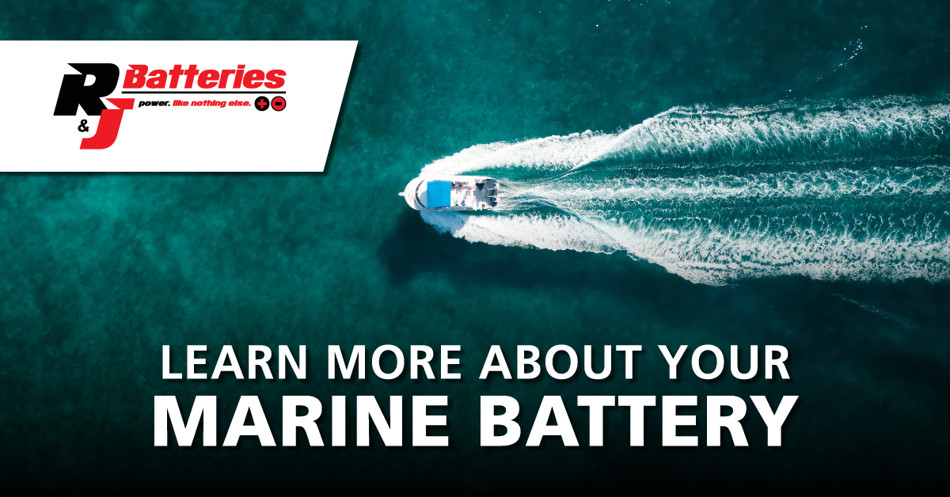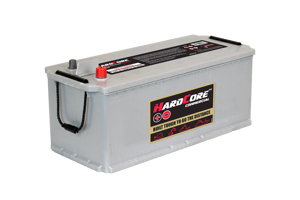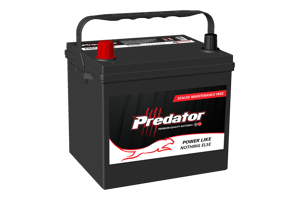Battery 101: Marine Battery Guide
We are blessed to be surrounded by pristine waters in New Zealand. It comes as no surprise that many engage in some form of boating activity annually. Whether you are a seasoned boater or just starting out, there are a few things you need to keep in mind when it comes to having a great experience on the water. Here is your comprehensive guide to marine and boat batteries covering everything from the types of batteries available in the market to maintenance and care.

Preparation
The first step in making sure your holiday goes according to plan is to ensure that your boat is in the right condition. This includes everything from checking that your boat license, vessel registration and insurance are up to date along with checking the onboard equipment and accessories, and of course the vehicle’s battery. There are large number of things to check which we won’t go into detail here but please do your due diligence before embarking on your journey.
What is a Marine Battery?
While the battery is a crucial component of a boat, it is often neglected until the warning signs start to show. A notable characteristic of these flooded marine batteries is their improved ability to withstand vibration. This improved vibration resistance is achieved by bracing the plate groups to each other and the battery case using hot melt adhesive. This additional support allows the plates to withstand the high vibration and shock loads experienced in boating applications. Flooded marine batteries are also designed to be maintenance free by reducing battery corrosion and water loss.
Starting Batteries vs. Deep Cycle Batteries
There are two main types of flooded marine batteries - starting batteries and dual purpose batteries.
Starting batteries, also known as cranking batteries, are designed to deliver the cranking power required to start marine engines.
In comparison, dual purpose batteries are designed for starting & cycling. Dual purpose batteries are designed to be able to start most marine engines plus deliver a steady stream of energy over a period of time. Internally these batteries have thicker plates compared to starting batteries to help with plate stability and durability however they give up some cranking power in order to be able to do this. Dual purpose marine batteries are generally used to power trolling motors, radios, lights, fish finders, depth finders and other electronic components that run when the boat’s motor is switched off.
Dual purpose marine batteries are very common nowadays as they provide the perfect mix of starting and cycling capabilities. While it sounds great to have the best of both worlds, it is important to remember to fit your marine application with the correct battery.
Battery Construction
There are a number of different types of battery which can be used for marine applications however they all have specific advantages. The four main types are Flooded Lead Acid (FLA) (discussed above), Absorbent Glass Mat (AGM) , Gel and Lithium-ion batteries.
- FLA Batteries
These are one of the oldest and most common types of marine batteries. They are heavy and bulky, and because of the liquid electrolyte cannot be tilted more than 45 degrees. Despite these disadvantages, many boating enthusiasts choose flooded lead acid batteries and are satisfied with their performance and service life. Flooded batteries are cheaper than the other options covered below, which can be a key factor in the purchase decision.
- AGM Batteries
While Absorbent Glass Mat (AGM) batteries are also lead acid batteries, they are improved versions of the basic lead acid design. The AGM design utilises a compressible mat made from fine glass strands to absorb and hold the electrolyte in suspension while also separating each plate. AGM plate groups are compressed by approximately 20-25% when inserted into each cell. This compression retains the active material in place throughout the battery’s life and contributes to superior cycle life, cranking efficiency and excellent vibration resistance. AGM’s are also non-spillable which means that they can be installed on their side or end without leaking.
- Gel Batteries
In terms of construction, gel batteries share many similarities to FLA batteries. The main difference is that silica is added to the electrolyte during assembly which causes the electrolyte to set as a gel in each battery cell. This gel makes them vibration resistant and non-spillable. They are also excellent for deep cycle use however gel batteries are not able to deliver the high current bursts required for starting.
- Lithium Batteries
Lithium batteries are the new kid on the block. Lithium Iron Phosphate (LiFePO4) batteries are becoming increasingly popular among boating enthusiasts as the ultimate deep cycle solution. They offer many benefits compared to lead acid batteries. Lithium batteries are smaller, lighter, have a much higher cycle life and provide faster charging. Lithium batteries do not suffer from sulphation, and have 100% useable capacity, which compares favourably to lead acid batteries which only have around 50% useable capacity. The self discharge rate of these batteries is also very low which make extended storage over the winter months easy.
Despite these benefits, there is still some hesitation in choosing lithium batteries due to their high upfront cost. Seasoned boaters looking to invest in a reliable and high quality battery may benefit from lithium batteries as they are a long term, cost effective power solution. While they cost more than a lead acid battery, their longer cycle life and higher useable capacity results in a lower cost per cycle compared to lead acid alternatives.
When choosing a battery for your marine application, it is best to seek advice from the battery experts at your local R&J Batteries branch. They will take into consideration your vessel’s engine size, starting requirements, the type of onboard devices, frequency of use, personal preferences and many other factors.
Maintenance and Care
Recreational vehicles such as boats and jet skis are often used seasonally or irregularly. While almost all batteries today are maintenance free there are a couple of things you can do to ensure your battery is ready to go when you are.
Here are some helpful tips to make the most of your marine battery:
- Keep your lead acid battery fully charged by connecting to a maintenance charger or multistage charger when not in use
- Inspect the posts for signs of corrosion or leaks.
- Lithium batteries do not need to be constantly charged. For extended storage periods, it is best to store your LiFePO4 battery between 20% & 80% State of Charge.
Takeaway
If you are planning to take your boat or jet ski out on the water soon, why not have your battery tested for free at your nearest R&J Batteries branch. Our team of battery experts will run diagnostic tests to ensure your battery is up for the task ahead. If a replacement battery is needed, have a chat about our range of ACDelco, Delkor, Predator, Optima and ALLiON batteries to find the right one for your power requirements.
Explore the Range Find a Branch



